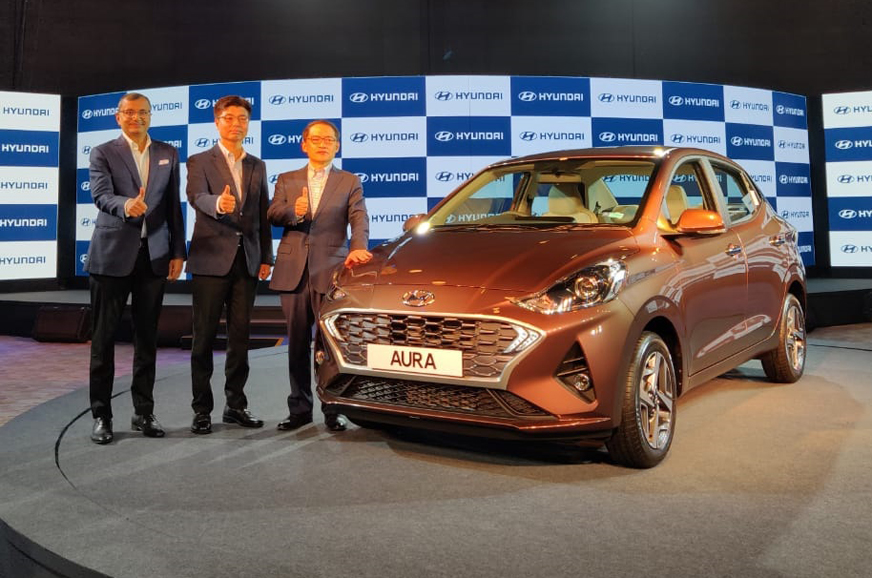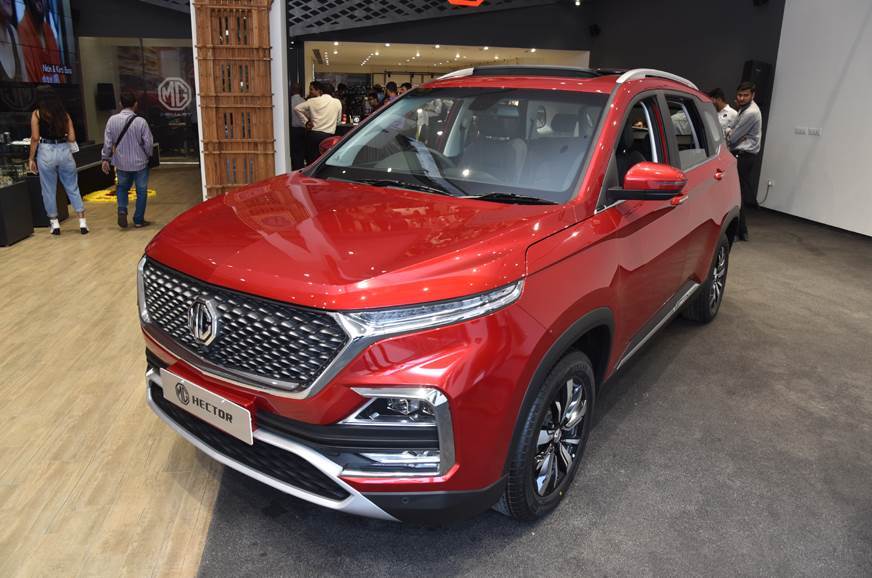
What is technically the next-generation of the Xcent has launched in India priced at Rs 5.80 lakh for the base petrol-manual variant and going up to Rs 9.24 lakh for the top-spec diesel-AMT variant (prices are introductory). The Hyundai Aura is available in five trim levels and six engine gearbox combinations. The table below has the variant-wise prices:
| Hyundai Aura variant-wise prices | |
| Variant | Price (ex-showroom, Delhi) |
| 1.2P-MT E | Rs 5.80 lakh |
| 1.2P-MT S | Rs 6.56 lakh |
| 1.2P-MT SX | Rs 7.30 lakh |
| 1.2P-MT SX(O) | Rs 7.86 lakh |
| 1.2CNG-MT S | Rs 7.29 lakh |
| 1.2P-AMT S | Rs 7.06 lakh |
| 1.2P-AMT SX+ | Rs 8.05 lakh |
| 1.2D-MT S | Rs 7.74 lakh |
| 1.2D-MT SX(O) | Rs 9.04 lakh |
| 1.2D-AMT S | Rs 8.24 lakh |
| 1.2D-AMT SX+ | Rs 9.24 lakh |
| 1.0TP-MT SX+ | Rs 8.55 lakh |
At this price point, the Hyundai Aura range starts slightly lower than the Xcent’s Rs 5.81 lakh base price. Considering the Aura is to the Xcent what the Grand i10 Nios is to the Grand i10, the new compact sedan improves on the last-gen model on nearly every front – it’s wider and has a longer wheelbase (which should liberate more room in the cabin), it’s got a longer equipment list, and it has got two petrol, one CNG and one diesel engine option, all of which are BS6-compliant.
In order to upgrade the BS4-compliant 1.2-litre three-cylinder U2 diesel engine to BS6 norms, Hyundai India has opted to use a Lean NOx Trap (LNT) and diesel particulate filters (DPF). This is the first BS6-compliant diesel engine from the Korean brand and the first small diesel unit to be upgraded to the new norms.
While 83hp, 1.2-litre four-cylinder petrol unit is the same one available in the Grand i10 Nios, the new 75hp/190Nm, 1.2-litre three-cylinder diesel unit on the Aura will soon be made available on the hatchback. Both these engines get 5-speed manual and 5-speed AMT gearbox options. There's also a standard-fit CNG option on offer: in this application 1.2-litre engine makes 69hp and 95Nm of torque and comes paired with a 5-speed manual. ARAI-rated mileage figures are 20.5kpl and 20.1kpl for the petrol-MT and petrol-AMT, and 25.35kpl and 25.4kpl for the diesel-MT and diesel-AMT version. Meanwhile, the CNG model is rated at 28.4km/kg.
The 1.0-litre three-cylinder turbo-petrol engine on offer with the Aura is the same unit that powers the Venue compact SUV, though it is tuned to make a lesser 100hp but the same 172Nm of torque in this application. A 5-speed manual will be standard fit. This engine has a 20.5kpl ARAI mileage.
This is the first time we’ve officially seen the interiors of the Aura and the similarities to the Nios are unmistakable – the dash design, switchgear and controls and seats are shared between the hatchback and compact sedan. In top-spec form, the Aura comes with a 5.3-inch digital instrument cluster, an 8.0-inch touchscreen infotainment system with Apple CarPlay and Android Auto that comes paired to an Arkamys sound system, wireless charging, a cooled glovebox, a rear centre armrest and a driver rear view monitor that projects from the inside rear view mirror. However, Hyundai’s BlueLink connectivity tech will not be on offer. Instead, the infotainment system is compatible with the Korean brand’s iBlue audio remote smartphone application.
Hyundai offers a new optional warranty packs under its new Wonder Warranty plan - three years/1 lakh kilometres, four years/50,000km and five years/40,000km, all of which come with a roadside assistance package valid for the same duration.
When compared to its predecessor, the Hyundai Aura comes across as an even better proposition than the Xcent was – the previous-gen compact sedan will continue to be on sale exclusively for the fleet and taxi market. Compared to its rivals in the segment, Hyundai seems to have maintained its penchant for competitive pricing while offering a well-kitted package. The relatively affordable, BS6-compliant diesel engine, along with the option of an automatic – the last bit is unique in the segment until the Honda Amaze comes with its BS6 diesel-CVT combo – should also help the Hyundai Aura sell well.
We’ll have to wait for a complete review of the Aura and a proper on-road comparison against its rivals to come to a definitive conclusion, but it seems like the Hyundai Aura should take over comfortably from where the Xcent left off, hopefully without the taxi image.
from Autocar India https://ift.tt/2RgGdyl
via IFTTT

No comments:
Post a Comment